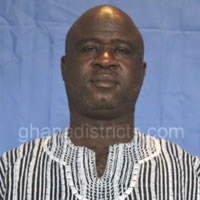The Central Gonja District is located at the southern end of the Northern Region of Ghana. It shares boundaries in the north with the Tamale Metropolis, the Kintampo North District of the Brong-Ahafo Region in the south, East Gonja District in the East and the West Gonja District in the West. It covers a total land area of 8,353 Km2, representing 12% of the total landmass of the Northern Region.
The land form of the district is low 1 ying but gently undulating at altitudes ranging between 150m to 300m above sea level though some parts average 600m. The area is traversed by two major rivers - the White Volta, which flows longitudinally through the district, and the Black Volta, which forms the district’s southern boundary with the Kintampo North District. A lot of streams crisscross the district and flow into the two Volta Rivers.
The Central Gonja District lies within the tropical continental zone. Annual rainfall is unevenly distributed and limited to six months that is, from May to October. The mean annual rainfall ranges between 1000mm and 1500 mm with its peak in September. It has a slightly longer rainy season than the rest of the northern region.
Relative humidity is between 70% and 90% during the rainy season but is as low as 20% during the long dry season. Though the rainy pattern constitutes a major limiting factor affecting agricultural activities in the district, rainfall in the district is relatively more stable and reliable than most districts in the Northern Region.
Temperatures are generally high and exhibit seasonal variation. The district has a mean annual temperature of 35°C with the maximum temperature of about 40°C usually recorded around March to April. Temperatures are lowest, on average 22°C, between November and January due to the influence of the north-easterly winds otherwise known as harmattan.
Soil types found in the district are alluvial, laterite and savanna ochrosols. Alluvial soils are potentially fertile and are mostly found along the two Volta Rivers, their tributaries and the large plains.
The Yakumbo Forest Reserve, which covers an area of 1,200 hectares, is the only Reserve in the district. It has potential for the production of durable wood for construction and energy.
The Central Gonja District is endowed with several aesthetic features located in various parts of the district. These include the beaches along the Volta Lake in areas like Buipe which can be used for outdoor recreation and camping. Also found are a number of hills, valleys and rocks outcrops of considerable beauty and that represent important heritage facilities and potential attractions to tourists. The rich culture of the people, which is manifested in the traditional architecture, festivals (particularly Damba), dressing (renowned Gonja smock) and traditional dances are of considerable beauty.
Date Created : 11/17/2017 4:23:38 AM




